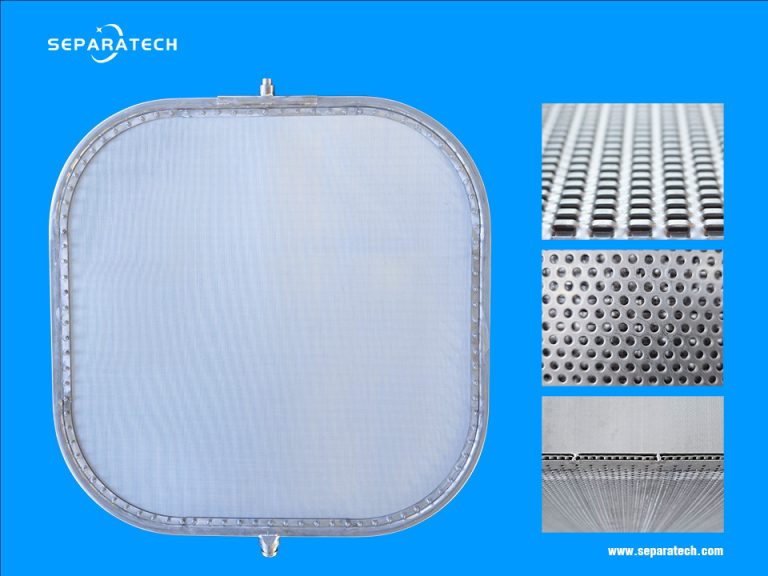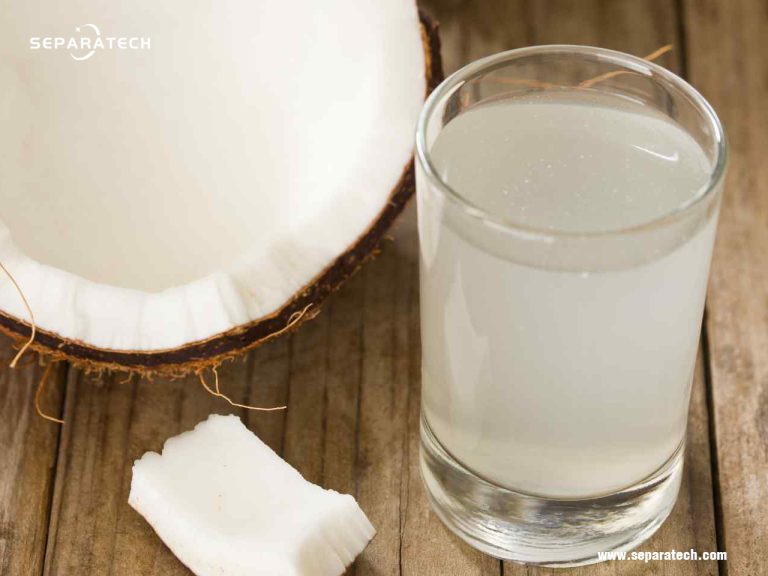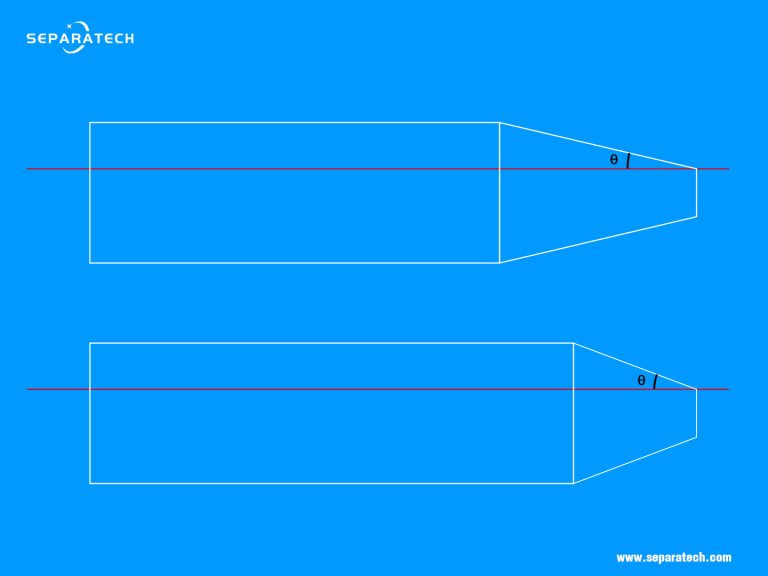Precoating filtration process
Precoating is the process of applying a thin layer of filter aid material, such as diatomaceous earth or perlite, on the surface of the precoat filter leaves before the actual filtration. The purpose of pre-coating is to form a porous cake that can trap fine particles and prevent them from clogging the filter cloth or mesh. Pre-coating also helps to protect the filter leaves from corrosion and abrasion, and to improve the clarity and purity of the filtrate.
Precoat operation
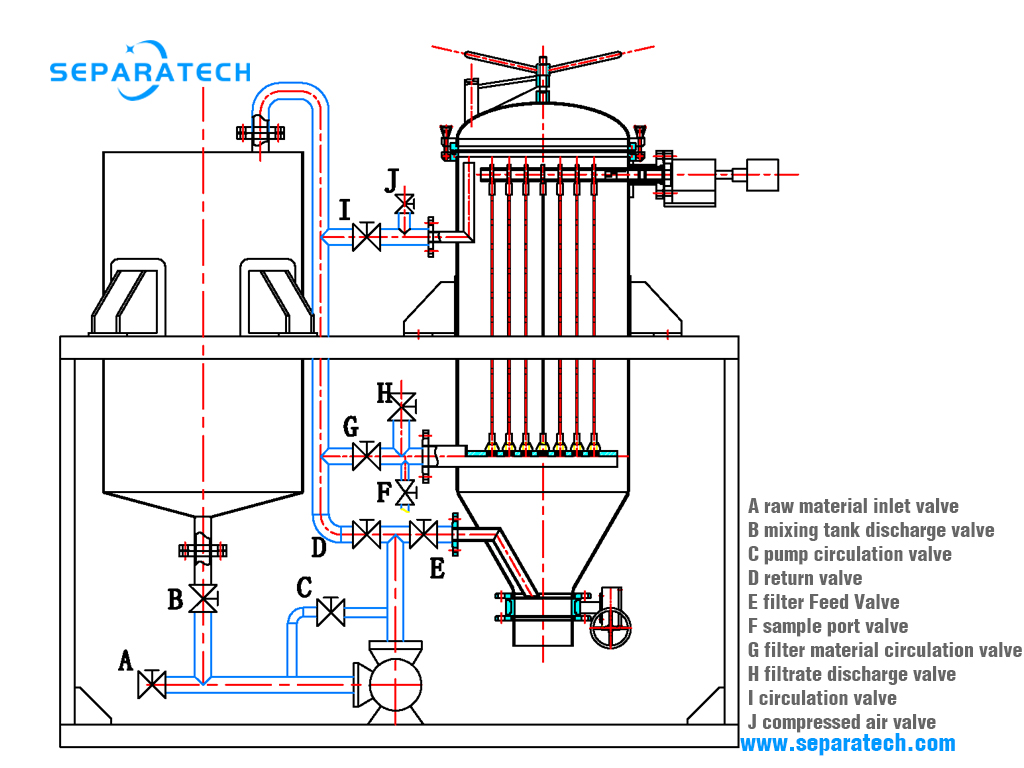
The precoat operation of vertical pressure leaf filter consists of the following steps:
1 Prepare the pre-coat slurry by mixing the filter aid material with water or other liquid in a suitable tank. The concentration and viscosity of the slurry depend on the type and size of the filter aid material, the flow rate and pressure of the slurry pump, and the desired thickness of the pre-coat layer. Generally, the slurry should have a low viscosity and a high flow rate to ensure a uniform distribution of the filter aid material on the precoat filter leaves.
2. Start the slurry pump and open the inlet valve of the vertical pressure leaf filter. The slurry will enter the precoat filter chamber and flow through the filter leaves from inside to outside. The filter aid material will be deposited on the surface of the filter cloth or mesh, forming a pre-coat layer.
3. Monitor the pressure gauge and the sight glass of the vertical pressure leaf filter. The pressure will gradually increase as the pre-coat layer builds up. The sight glass will show the level of the slurry in the precoat filter chamber. When the pressure reaches a predetermined value or when the sight glass shows that all the filter leaves are covered with slurry, close the inlet valve and stop the slurry pump.
4. Open the drain valve and drain out the excess slurry from the precoat filter chamber. The pre-coat layer should be intact and adherent to the filter cloth or mesh. If there are any cracks or gaps in the pre-coat layer, repeat steps 2 to 4 until a satisfactory pre-coat layer is obtained.
5. Close the drain valve and proceed with the actual filtration.
Benefit of precoat filter
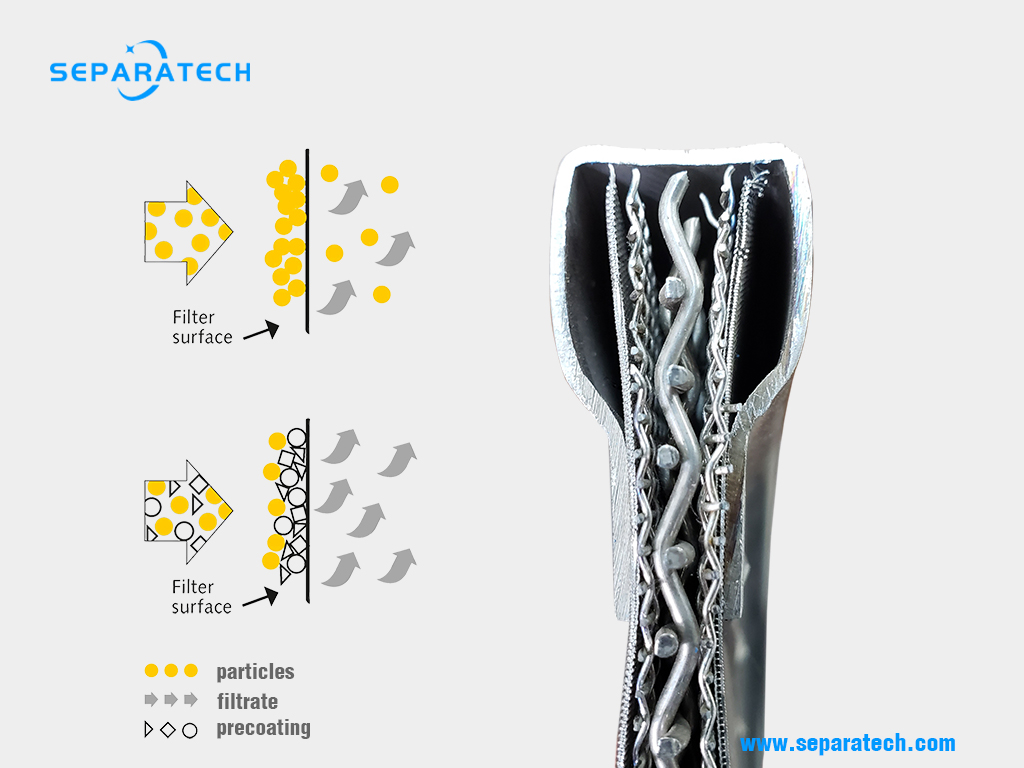
The advantage of pre-coating is that it can improve the filtration performance and extend the service life of vertical pressure leaf filter. Pre-coating can increase the filtration area and reduce the resistance of filtration, resulting in higher flow rates and lower pressure drops. Pre-coating can also enhance the removal efficiency and selectivity of filtration, resulting in clearer and purer filtrates. Pre-coating can also prevent blinding and fouling of filter cloth or mesh, resulting in longer filtration cycles and less frequent cleaning or replacement of filter leaves.
Filter aid
Filter media are to a large extent chemically inert materials of fine fibrous or granular structure, which develop precast filter layers of high permeability. The filter bed consists mostly of diatomaceous earth (diatomite or kieselguhr), which is manufactured from fossil remains of diatoms, a type of algae having a silica skeleton. A number of other media may be employed for precoated filters. Chief of these is perlite, which is processed from a vitreous rock of organic origin. Other precoat media include powered organic rock, activated carbon, asbestos and cellulose.
Precoat filter
The precoat filtration can be used in vertical leaf filters, horizontal pressure leaf filters, candle filters, filter presses, layer filters and rotating drum filters.
Applications of precoat filter
Precoat filter can be used for pretreatment to enhance specific properties of the basic media. Typical applications:
– Cellulose media is employed for the removal of colloidal and compressible solids (e.g. Condensate treatment in power stations, removal of solid particles, metallic impurities and oil).
– Bleaching edible oil with filter aid
– Incorporation of a de-chlorinating agent to remove excess chlorine in the production of sterile or chlorine-free water.
– Surface treatment (e.g. silver coating) to inhibit the growth of bacteria on the filter membrane.
– Filtration of liquid sugar and molasses
– Processing and purification of circulating systems for different oils, grinding agents and coolants
– Clarification of fruit juices in food processing
– Purifications of herbicides and insecticides
– Recovery of liquids from brewery wastes
– Polishing applications in metallurgical processing
